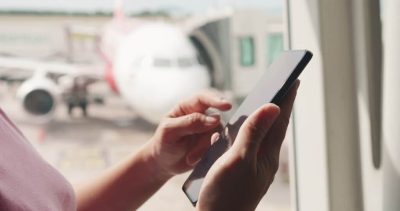Air Canada Launches Face Biometrics for Passenger ID
CBP conducts TVS test, aviation industry prepares for more passengers

All Global Research articles can be read in 51 languages by activating the Translate Website button below the author’s name.
To receive Global Research’s Daily Newsletter (selected articles), click here.
Follow us on Instagram and Twitter and subscribe to our Telegram Channel. Feel free to repost and share widely Global Research articles.
***
Air Canada, Canada’s largest airline, has become the first airline in the country to offer customers facial recognition technology for digital identification. The pilot project is currently available at Vancouver International Airport (YVR) and at Toronto Pearson International Airport, with plans to expand digital identification options to other Canadian airports and Maple Leaf Lounges.
A promotional video explains that the user takes a photo of a passport or driver’s license, scans the NFC chip, and submits a video selfie for biometric matching.
“Air Canada’s pilot project will speed up processes at YVR, and other airports where it’s established, while respecting robust privacy measures and security standards. This project has great potential in making gate boarding easier and faster for Canadian passengers, while maintaining strong safety measures,” says Omar Alghabra, Canada’s Minister of Transport.
According to Air Canada, eligible customers flying from Vancouver to Winnipeg and those using the Air Canada Café in Toronto will be invited to use digital identification for faster, more secure processing. Alternative options are available for those who wish to manually check-in or scan their boarding passes.
Air Canada’s digital identification feature enables customers to securely store biometric data on their mobile phones. Customers must provide additional consent for the data to be used day-of-travel and will be retained for up to 36 hours, in compliance with Air Canada’s privacy and security standards, the company says.
“Customers choosing to use digital identification will benefit from a simplified and seamless process at the gate and when entering our Maple Leaf Lounges,” says Craig Landry, the executive vice president and chief operations officer at Air Canada.
Air Canada’s digital identification is a voluntary program separate from government-sponsored initiatives such as NEXUS, Global Entry or U.S. CBP Mobile Passport Control (MPC).
CBP testing facial authentication
U.S. Customs and Border Protection is holding a voluntary test for airlines and cruise ships to use the Traveler Verification Service (TVS) and its face biometrics to meet Advance Passenger Information System (APIS) requirements.
Testing begins this month and will run for up to two years. CBP is currently accepting applications from carriers to participate in the tests on a rolling basis. During the test, successful matches will result in the requirement for a manual review of travel documents to be waived.
Participating carriers get access to CBP’s TVS facial comparison service, and have to supply their own hardware. Based on previous pilots, CBP estimates the hardware will cost between $5,000 and $20,000 for each departure gate, though with iPads being tested at Washington airports and similar developments, the cost could fall.
The CBP announcement also includes penalties for misconduct by carriers using passenger biometrics, and information on the Privacy Impact Assessment for TVS.
Aviation industry prepares, if unevenly
Airports have had time to prepare for a coming surge in passengers, but it remains to be seen how well they have used it, Alton Aviation Consultancy Director Ronan Murphy tells PhocusWire.
Being ready means having adequate staffing and efficient check-in and security processes, he says. Biometrics can help, but their rollout has been slow.
Staffing has been made difficult by the departure of experienced personnel from the industry during the standstill caused by the pandemic.
SITA Americas CTO Sherry Stein says that the industry is focussed on “continuity of experience,” having already seen that passenger boarding times can be reduced by 30 percent with biometrics.
*
Note to readers: Please click the share buttons above. Follow us on Instagram and Twitter and subscribe to our Telegram Channel. Feel free to repost and share widely Global Research articles.
Featured image is from Biometric Update

